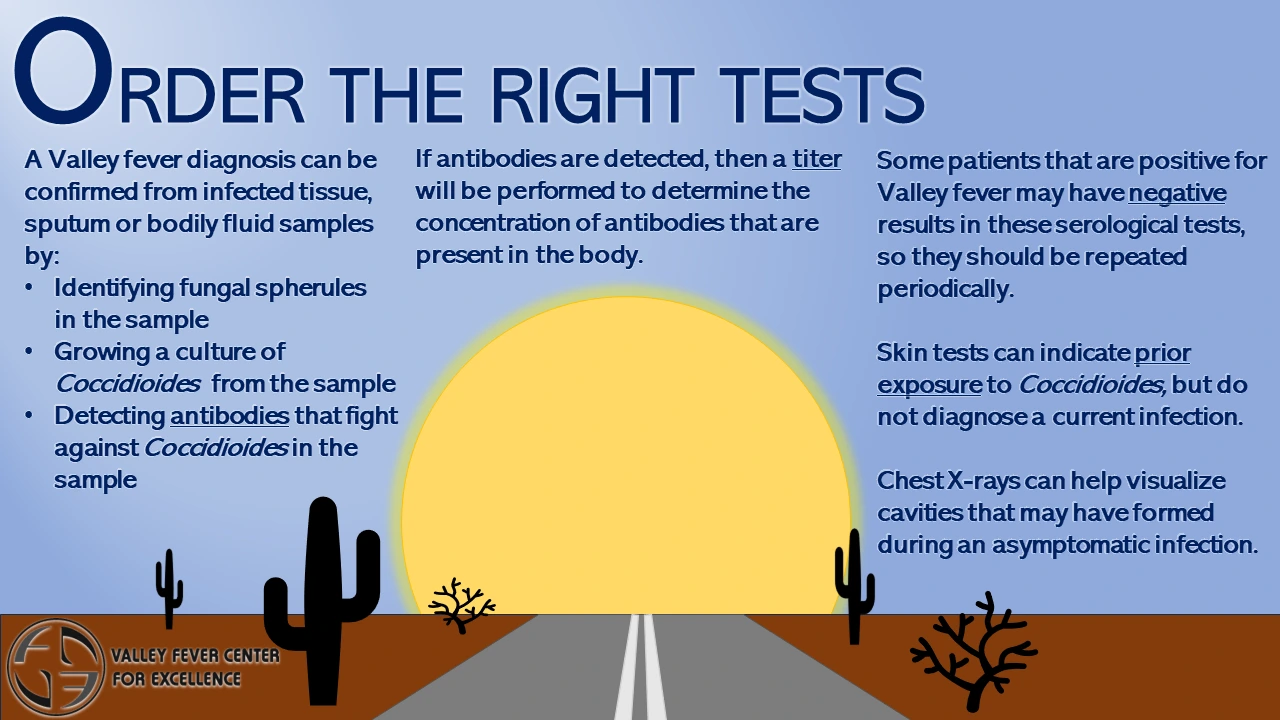
Valley Fever diagnosis can be confirmed by:
- microscopic identification of the fungal spherules in an infected tissue, sputum or body fluid sample
- growing a culture of coccidioides spp. from a tissue specimen, sputum or body fluid
- detection of antibodies (serological tests specifically for Valley Fever) against the fungus in blood serum or other body fluids
A diagnosis of coccidioidomycosis is suspected only if a patient is known to have had exposure to the disease through travel or residence in an endemic area.
If the serologic test for Valley Fever antibodies is positive, the laboratory then performs a titer.
- A titer is a measurement of the amount or concentration of antibodies a patient is making against the fungus
- An antibody is a protein that is produced by the patient's immune system in response to an antigen (the fungus)
- An antibody is able to combine with and neutralize the antigen
A titer is obtained by doubling dilutions of the positive blood (1:4, 1:8, 1:16, 1:32 . . .) until the test becomes negative. The titer that is reported to your physician is the last positive dilution.
While positive serological results almost always mean that a patient has Valley Fever, a third or more of patients with Valley Fever may actually have negative results. Therefore, it may be necessary to repeat the serologic test periodically.
Valley Fever skin tests (coccidioidin or spherulin)
indicate prior exposure to the fungus, but, because reactivity is lifelong, skin tests are not particularly helpful in diagnosing a current infection. The skin tests are once again commercially available, as of July 2014.
Routine chest x-rays
will commonly detect Valley Fever cavities in a person with no symptoms and who may be unaware of having had Valley Fever.

